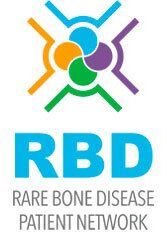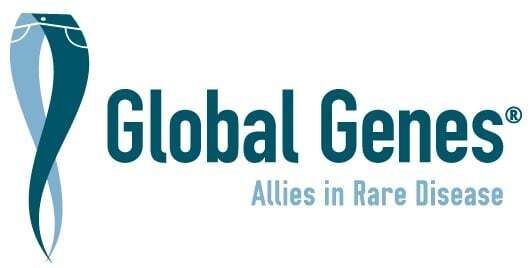
Two common health issues can be seen with blood vessels: differences in their structure (malformations) and tumors. Dr. Elisa Boscolo and her team at Cincinnati Children's Hospital are interested in understanding why these two things happen. In this lecture, Dr. Boscolo summarizes the research her lab is doing to learn about the genetic basis of capillary lymphatic venous malformations (CLVM) and venous malformations (VM).
Background
Capillary Lymphatic Venous Malformation (CLVM)
CLVM is a disorder in which there are abnormal blood vessels and often tissue overgrowth. Most have somatic mutations in the PIK3CA gene. These are referred to as PIK3CA-related overgrowth spectrum (PROs): CLOVES is an example. Current treatments include Sirolimus and Alpelisib while AKT inhibitors are in clinical trials.
Genetics
The changes in the PIK3CA gene seen in patients with CLVM are identical to those seen in patients with certain types of cancer. A recent study by Dr Semple and his colleagues evaluated the differences in PIK3CA mutations in vascular anomalies versus cancer. This group showed that in cancer there are changes in both copies of the PIK3CA gene while in vascular anomalies only one copy of the PIK3CA gene is changed. This leads to the regulation (up or down) of many more genes in cancer compared with vascular anomalies. The genetic changes impart a stemness phenotype to the cancer cells.
Another question is whether the timing of expression of mutant PIK3CA during development will change the type and/or severity of malformation. Dr. Mäkinen expressed mutant PI3KCA gene in lymphatic endothelial cells either early or late in mouse development and found macrocystic LMs developed when expressed early while microcystic malformations developed when expressed late.
Capillary Venous Lymphatic Malformations
As multiple types of cells play a role in the development of capillary, venous and lymphatic vessels, the team wanted to see which types of cells expressed the mutant PIK3CA gene. They performed experiments in which they collected multiple cell types from patient samples, injected one type of cell into a mouse (called Xenograft model), and observed which cell type caused malformations. The researchers found that single vascular endothelial cells (VEC) and lymphatic endothelial cells (LEC) carrying PIK3CA mutant gene could form malformations in mice. However, LEC could only form lymphatic malformations while VEC could only form vascular malformations. These results show that in CLVM PIK3CA mutations are present in both LEC and VEC and suggest the mutation arose in a common precursor cell.
Venous Malformations
Veins are larger vessels than capillaries and lymphatic vessels and can also be misshapen. Venous malformations are caused by hyperactive TIE2 or PIK3CA genes. Similar to the experiments described above Dr. Boscolo’s group collected patient samples and injected several types of cells in mice to see which had the affected genes. Venous overgrowth was again associated with vascular endothelial cells expressing either the mutant TIE2 or PIK3CA gene. Next, they determined what type of signaling was happening in the affected cells. They showed that VEC expressing PIK3CA had increased levels of phosphorylated (activated) AKT while VEC expressing TIE2 showed less phosphorylated AKT but more phosphorylated ERK when compared to the PIK3CA mutant cells. When injected into mice the PIK3CA VEC showed a higher density of abnormal veins when compared to TIE2, suggesting higher activated AKT correlates with a higher density of abnormal veins.
Using these xenograft mouse models they showed that Sirolimus could slow the overgrowth of the hyperactive TIE2 tissue in mice by blocking cell signaling. Screening a drug library using this system they identified three additional drugs that slowed the growth of VMs. Interestingly all three drugs were inhibitors of ABL kinase (Ponatinib, Dasatinib, Nilotinib). Next, they set out to determine if the activation of ABL was important in the formation of VMs. Using patient endothelial cells carrying the TIE2 mutation they found that ABL was constitutively activated. Using genetic tools to reduce the level of ABL in TIE2 mutant endothelial cells followed by injection into mice they showed that the resultant VMs were smaller and less dense compared to TIE2 alone confirming activation of ABL is an important mediator of TIE2-induced VMs. Treating the Xenograft mice using both Rapamycin and Ponatinib versus either drug alone resulted in significantly more regression of VMs. This effect was seen even when using very low doses of the drugs. Although these exciting preliminary results require confirmation, the researchers believe that these medicines hold therapeutic potential for patients with venous overgrowths caused by TIE2.
New 3D Invitro model of VM
Dr. Boscolo described a new culture model system she has developed to study venous development. Dextran-coated beads are covered with vascular endothelial cells and then placed in a fibrin gel matrix. Using this system, the lab has been able to recapitulate the 3-dimensional development of veins in vitro. Also, they can look at the recruitment of additional cells like pericytes and smooth muscle cells that could not be done using conventional 2D cultures. Using this model, they demonstrated the very abnormal vein structure and reduced pericyte recruitment when using endothelial cells expressing mutant TIE2 compared with wildtype. This exciting new model more closely resembles what we see in human venous malformations and can be extended to study other vascular malformations as well.










